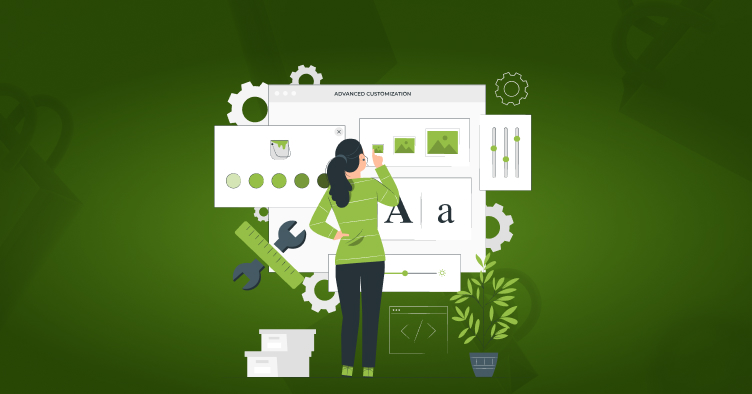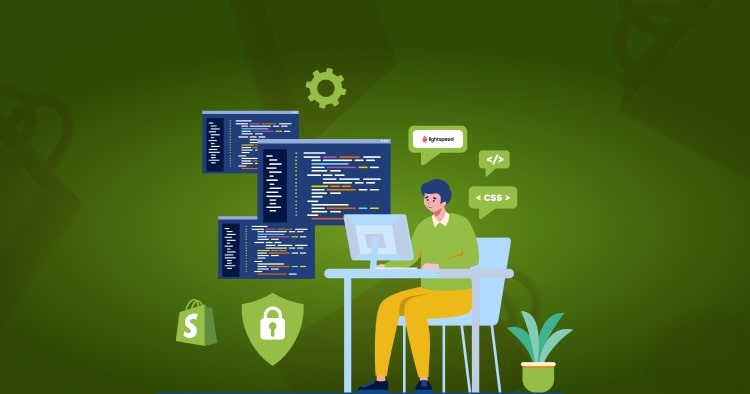Shopify emerges as a highly intuitive eCommerce solution empowering small ventures to carve out their presence in the digital marketplace with ease. Through a singular, cohesive dashboard, it simplifies the creation and management of an online storefront, whilst facilitating sales across various platforms including social media, third-party marketplaces, and even through direct communication channels like email, messaging, and chat. Additionally, Shopify seamlessly integrates an in-built point-of-sale (POS) system, perfect for brick-and-mortar retail shops, pop-up stores, and market stalls, enhancing the physical retail experience.
What is Shopify?
Shopify provides a comprehensive commerce solution, empowering individuals to launch, expand, administer, and scale up their business operations. This platform facilitates the creation of an online storefront, allows for customer engagement and marketing, and supports the acceptance of payments from a variety of sales channels and geographies, all from a singular, unified location.
Shopify stands out as an optimal platform for enterprises seeking a comprehensive eCommerce package. For large-scale and growing businesses, investing in expert Shopify plus web development unlocks advanced enterprise features and custom solutions. This service includes an array of features such as handling payments, offering reduced rates on shipping, overseeing inventory, as well as providing banking options, and extending credit to certain merchants.
How does Shopify work?
Shopify streamlines your business by consolidating products, customer information, and operational activities into a unified system that integrates effortlessly with all your sales outlets. After establishing the fundamentals, Shopify simplifies the process of broadening your inventory and exploring additional channels for distribution.
Shopify functions as a comprehensive eCommerce platform that allows individuals and businesses to create their online stores. It streamlines the digital selling process with several key features:
- User-Friendly Interface: Shopify provides a seamless setup process with an intuitive admin interface for managing products, orders, and customer data.
- Hosting and Security: It offers reliable hosting solutions, ensuring that online stores are fast and secure with little downtime.
- Customizable Themes: Merchants have access to a variety of customizable themes that can be tailored to align with their brand identity.
- Integrated Payment Processing: Shopify Payments simplifies the transaction process by allowing payments from various methods, including credit cards and digital wallets.
- App Ecosystem: The Shopify App Store contains numerous plugins and apps that extend the functionality of the store, from marketing tools to inventory management systems.
- 24/7 Support: Shopify’s customer support is available around the clock to assist with any issues that may arise during the operation of an online store.
How Much Does Shopify Cost?
Shopify’s cost structure incorporates a monthly subscription fee that varies with your chosen plan, in addition to charges for processing payments, purchasing shipping labels, and requirements for a sophisticated point-of-sale system.
Shopify Subscription Costs
All five eCommerce plans offered by Shopify accommodate an unlimited number of products, orders, and customers while ensuring data protection and adherence to Payment Card Industry (PCI) standards. Round-the-clock support and a comprehensive suite of tools for sales and business operations are also included. Additionally, Shopify rewards prepayments with a 10% discount for annual payments and a 20% reduction for biennial payments.
You can check the details on the official Shopify pricing page (https://www.shopify.com/pricing).
| Feature | Basic | Shopify | Advanced | Shopify Plus |
| Cost | $25/month OR $228/year |
$65/month OR $588/year |
$399/month OR $3,588 |
Starting at $2,300 USD/month |
| Store Staff Accounts Add staff to help in the management of your store, such as adding products and managing orders. |
2 | 5 | 15 | Unlimited |
| Reports Access a wide variety of reports to help track and analyze your store’s performance. |
Basic | Standard | Advance + Custom | Advance + Custom |
| Third-Party/Custom-Calculated Shipping Rates Show calculated rates with your account or third-party apps at checkout. |
No | No | Yes | Yes |
| Checkout Customizations | No | No | No | Yes |
- Basic, Shopify, and Advanced Plans ($29, $79, and $299 per month): Each of Shopify’s online store plans delivers omnichannel sell-anywhere features and a full suite of order, customer, and business management essentials. As you move up the plan tiers, you get lower payment processing fees, larger shipping discounts, and access to advanced marketing, management, and reporting tools.
- Shopify Plus (from $2,300 per month): Offers enterprise-level features geared for high-volume, multi-location, and multimillion-dollar sellers. Plan pricing, terms, and features are negotiated based on sales volume and business needs at this level.
Looking for more insights on pricing? Check out our guide on Shopify pricing.
How to Kickstart Your Ecommerce Journey with Shopify
Venturing into the world of eCommerce with Shopify is an exciting endeavor. Here’s a streamlined guide to getting your Shopify store off the ground and populating it with enticing products.
- Begin with a Free Trial: Start your Shopify adventure risk-free by signing up for their free trial. It’s a hassle-free process — no need to input credit card details, just some basic information about you and your business.
- Select Your Products Carefully: The heart of your Shopify store is what you sell. It’s crucial to choose items that not only captivate your audience but also promise a good margin of profit. Utilize tools like Dropshipman to effortlessly find and incorporate these products into your store.
- Personalize Your Storefront: The aesthetic and feel of your online store are pivotal in crafting a positive user experience. Shopify offers a diverse range of themes — both free and premium — to furnish your store with a unique look. Navigate to Online Store > Themes within your Shopify dashboard to explore and apply your chosen theme.
- Enable Payment Options: Shopify supports various payment methods, including its own Shopify Payments, PayPal, and Amazon Pay, among others. You can set these up by going to Settings > Payments, ensuring you cater to the preferences of a broad customer base.
- Organize Shipping Logistics: For those who manage their own inventory and shipping, it’s important to establish a reliable logistic strategy. Shopify Shipping is a recommended option, designed to minimize delays while offering competitive rates. Activate this service under Settings > Shipping and Delivery to streamline your fulfillment process.
By following these steps, you’re well on your way to launching a successful Shopify eCommerce store.
Enhancing Your Shopify Store’s Growth
Expanding your Shopify store can be achieved through a variety of strategies. Here are some refined approaches to consider:
Capitalize on Advertising
Deploy strategic advertisements across platforms where your target audience actively engages. This could include Facebook, Google, and other social media networks. The key is to select platforms that not only offer robust targeting capabilities but also align with where your audience spends significant time. While Facebook and Google reign as popular choices, the ideal platform highly depends on your specific niche.
Harness the Power of SEO
SEO emerges as a critical driver for directing relevant traffic to your store, yet it’s often underestimated by new eCommerce entrepreneurs. The allure of quick profits may divert attention to paid ads, but the long-term benefits of a solid SEO and content marketing strategy can’t be overstated. By focusing on organic growth, you significantly reduce customer acquisition costs while simultaneously boosting your store’s conversion rates.
Utilize Social Media for Promotion
Building anticipation before your store’s launch is crucial. Initiating a social media presence, such as on Instagram, weeks before going live offers a platform to engage and grow your audience. This pre-launch strategy ensures that you have a captive audience ready, which could translate into initial sales through strategic link placements in your bios or targeted advertisements.
These refined tactics not only aim to elevate your Shopify store’s visibility but also enhance its overall conversion potential and sustainability in the competitive eCommerce landscape.
Final Verdict
Shopify stands as a comprehensive eCommerce platform, designed to enable entrepreneurs around the globe. This platform simplifies the process of creating a digital storefront, allowing you to launch and conduct sales swiftly. It’s ideal for those looking to initiate a new venture or transform a traditional physical store into an online operation. Shopify also provides access to preferential shipping rates through its integrated Shopify Shipping service, where you can purchase and print labels for your orders right within your Shopify account. The best way to discover what Shopify offers is to dive in and start building your eCommerce site. Benefit from the free trial period to explore the platform’s capabilities firsthand and understand why it’s so well-regarded. Shopify aims to enhance the commercial experience for all, potentially becoming the ideal solution for your business needs.
FAQs
What is the main purpose of Shopify?
Shopify is an all-encompassing e-commerce platform designed to help individuals and businesses set up their online store and sell products across multiple channels. Its main purpose is to provide a user-friendly toolset that covers everything from website hosting, design, and development to inventory management, payment processing, and shipping logistics. This allows merchants to focus on building their brand and sales without worrying about the technical intricacies of operating an online store.
How can I make money from Shopify?
Making money on Shopify involves several strategies, starting from choosing the right niche, sourcing or creating products that meet market demand, and effectively setting up your Shopify store. You can generate income by dropshipping, where you sell products without holding inventory, creating and selling your own products, or even buying wholesale and selling at retail prices. Successful monetization also depends on employing robust marketing strategies, including SEO, content marketing, social media promotion, and email marketing to attract and retain customers.
How does Shopify work for beginners?
For beginners, Shopify offers a straightforward and accessible platform to launch an e-commerce business. It starts with setting up your Shopify account and choosing a store theme that fits your brand. From there, you can add products with descriptions and images, set up payment and shipping options, and customize your store’s design without needing any coding knowledge. Shopify also provides extensive resources, such as guides and tutorials, to help new users understand e-commerce fundamentals and how to use the platform effectively. Additionally, Shopify’s 24/7 customer support is available to assist with any questions that may arise during the setup process or afterwards.
Is Amazon better than Shopify?
Choosing between Amazon and Shopify depends on what you’re looking for in an online sales platform. Amazon offers a vast audience, making it easier for sellers to get their products in front of millions of customers. However, it’s more competitive and comes with higher fees. Shopify gives sellers more control over their store’s design and branding, and it’s better for building a long-term brand. The best choice depends on your business goals, budget, and the level of control you want over your online store.
Can I start Shopify for free?
Shopify offers a 14-day free trial that allows you to explore the platform’s features without entering credit card information. During the trial, you can build your online store, add products, and test out themes. However, to start selling and fully launch your store, you’ll need to choose one of Shopify’s paid plans.



